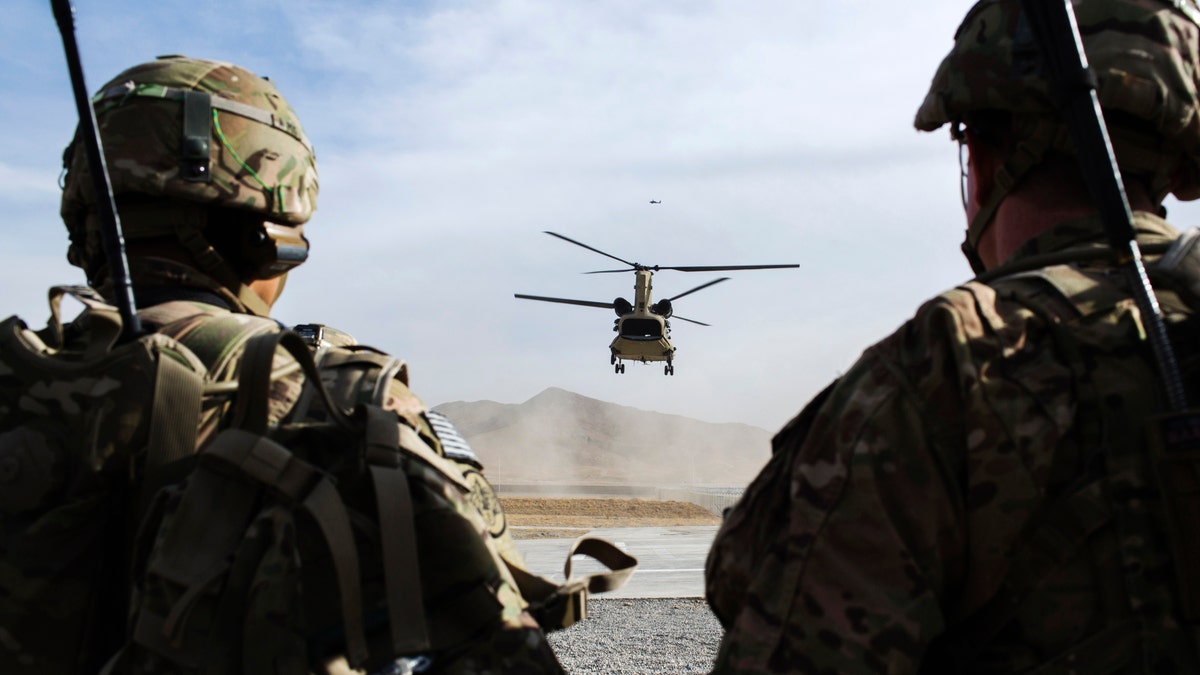Fox News Flash top headlines for June 3
Fox News Flash top headlines are here. Check out what's clicking on Foxnews.com.
Tanks controlling air-ground robots, AI-enabled targeting and reconnaissance, attacking in milliseconds, vehicle and aircraft-fired lasers, self-guiding ammunition, morphing swarms of autonomous drones and fast, real-time, multi-domain networking are all anticipated elements of warfare in 2040.
These prospects, involving a wide swath of overlapping factors, are now capturing the attention of a special group of “Future Concepts” experts at Fort Eustis, Virginia, with Army Futures Command. They are now analyzing the kinds of operational environments, weapons, technologies and warfare maneuvers expected to characterize warfare decades from now.
Army Futures Command Combat Capabilities Development Command calls it “Team Ignite,” a special future-oriented force of scientists, weapons technology experts and warfare strategy and concept developers. The idea is, fundamentally, not to just explore how new technologies will arrive -- and there are many paradigm-changing systems in early development -- but how will new technology intersect with new concepts of war? ... [C]hanging maneuver formations, multi-domain attack and forcing major adaptations to mechanized warfare?”
SOLDIERS USE AI TO FIRE PRECISION GRENADES, GUIDE DRONE ATTACKS
“It is not a standing organization but a cross functional team between my technologists, my scientists and my concept writers at our Futures and Concepts Center. This forces the people who are thinking about future concepts to take technology into account because the technologists are right there with them,” Gen. John Murray, commanding general of Army Futures Command, said in an interview for Warrior.

File photo - U.S. soldiers from the 3rd Cavalry Regiment watch as CH-47 Chinook helicopter from the 82nd Combat Aviation Brigade lands after an advising mission at the Afghan National Army headquarters for the 203rd Corps in the Paktia province of Afghanistan December 21, 2014. (REUTERS/Lucas Jackson)
Attacking formations of armored columns could, for instance, maneuver in a broader, potentially more lethal dis-aggregated fashion, made possible by advanced sensors, autonomy, networking and AI systems. A less-condensed force would of course be less vulnerable to large-scale destruction by enemy attacks.
The idea is to get a multi-decade jump on warfare decades from now, involving a carefully calibrated blend of intelligence information, near-term emerging weapons, basic research looking 20-years ahead and new technical trends promising to massively alter the nature of war.
HOW AI CHANGES ATTACK MISSIONS FOR US FIGHTER JETS AND BOMBERS
“If we write the concept and say ‘if only I could?’ ... And then say ‘well I can’t do that right now, but what about in 15 years?’ There is a path to get there if we put the dollars in the right place today,” Murray said. “We are making those investments now, so that 15 years from now ... we go from ‘if only I could’ to ... we actually can.”
Speaking to current methods of bringing these ideas to life, Brig. Gen. John Rafferty, director of the Long Range Precision Fires Cross Functional Team, Army Futures Command, told me that new technologies and emerging warfare tactics will inspire a new, modern notion of traditional “Combined Arms Maneuver.” A vital element of the kind of warfare envisioned by futurists incorporates Information Dominance and ... as Rafferty put it, using a tactical network. He told me that many key programs and platforms (especially Long-Range Precision Fires in his case) now being developed to surge the Army into future decades of war -- are all being engineered with a mind to a “network.”
“We are bringing the Combined Arms effect of Long Range Precision Fires, Future Vertical Lift and Next Generation Combat Vehicle networked together. Multi-domain tenets involve convergence,” Rafferty said.
CLICK HERE TO GET THE FOX NEWS APP
Extending this reasoning, several pertinent elements of emphasis with major Army programs point to a networking “synergy” wherein platforms operate as attack machines and information “nodes” in a larger, multi-domain meshed network.

